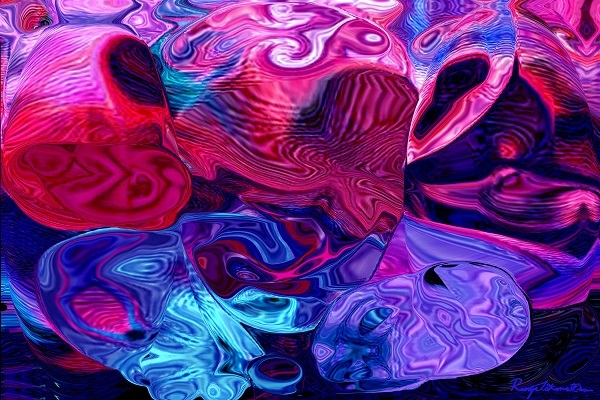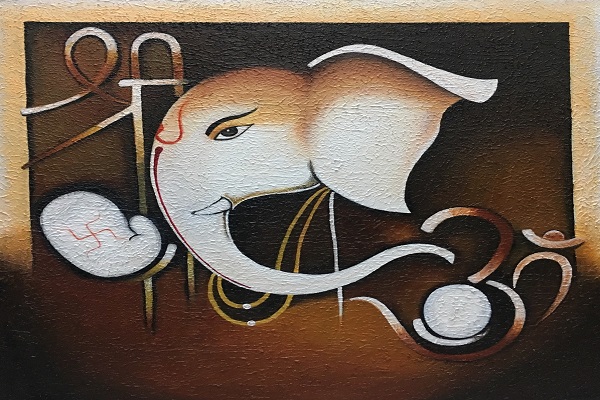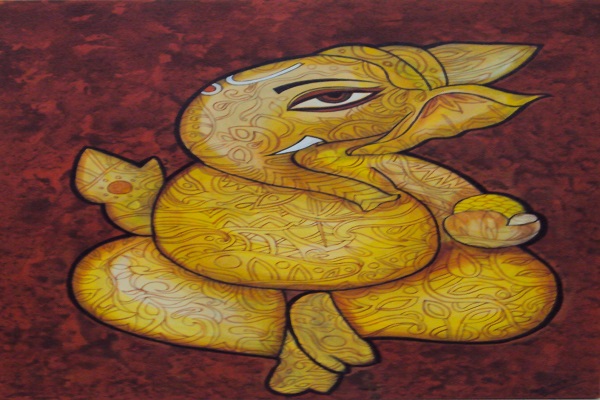
Excited to purchase paintings for your home?
Good.
When you purchase a painting, you aren’t just getting your hands on a visually attractive commodity. Art is something that defines you or something that gives a literal visual to your expression or words.
To me – Art is a sublime way using which I always blur out everything I ever wanted to say.
Whether I create art or I purchase a painting, the process is quite sacred for me because of the presence of numerous elements that could evoke emotions and can stir my thought process intensely.
So, before you purchase any artwork, it becomes quintessential to get an explicability of the same.
This blog is a shout out to all art lovers who are planning to purchase Ganapati artwork for their home. Let’s see what implied interpretations Ganesha paintings hold:
The Significance of Ganesha Paintings
Being an art lover, you can sometimes feel eluded by the exquisite designs, sometimes by the serene look or because of the intriguing theme of an artwork.
But what happens when you are on the quest to buy Ganesha pictures, paintings, sculptors, etc and you don’t know the true essence of this deity.
For art lovers who aren’t aware of the Indian traditions, Ganesha is a celebrated deity in Hinduism.
He is the son of great Lord Shiva and Goddess Parvati.
When you look at different Ganesha paintings, you see that the deity has an elephant head with a human body.
Don’t get confused.
The tale of Ganesha having an elephant head stretches back to the Hindu Mythological narration.
It is believed that Goddess Parvati created Ganesha from the earth into the shape of a boy. She ordered him to guard the door while Parvati was bathing.
At this time, Shiva entered and was confronted by Ganesha at the entrance.
Both were unknown of each other’s identity and hence a ferocious battle ended with the beheading of Ganesha by Shiva.
Parvati, when came to knew about this, was filled with sorrow and anger – to which Shiva ordered his disciples to bring the head of the first living being they get.
As a result, disciples brought the head of the elephant and Ganesha was brought back to life.
The story is quite enticing, right?
A lot of Ganpati artworks are made by Indian artists owing to the high demand for such pieces.
India is a well-known land of Gods and Goddesses. People are highly inclined towards religion and having an imitation of deities in the form of a painting is a common practice here.
However, for an art lover like yourself, who belongs to the western countries, Ganesha is an epitome of good life and prosperity.
People hang up Ganpati artworks in their homes, offices, stores, etc. – typically anywhere.
It is believed that having extravagant Ganesha paintings for your home would lift up the aura of your surroundings with explicit positivity and joy.
You can place Ganesha artwork at the entrance of your home but be sure of where you are hanging or putting it up.
Placing Ganesha pictures or art pieces facing the entrance of the inner walls of your rooms is assumed to be a very good omen.
Similarly, in India, worshipping Ganesha or having Ganpati paintings while starting a new venture, shifting to a new home, purchasing a new car or joining a new job is considered extremely lucky.
The popularity of Ganesha paintings doesn’t stop here. Festivals like Diwali and Ganesh Chaturthi are also instances when this deity is worshipped and his manifestations are in great demand.
If you are looking to score an expressive and vivacious painting of Ganesha, try exploring the prominent online art galleries during these festivals.
For the lovers of modern art and abstraction, artists have come up with some tantalizing and mind-boggling fusion of Ganesha art and modern techniques.
Having this said, let’s now shift our focus towards the implied meaning of manifestation of Ganesha.
The obscured meaning of Ganpati artworks
The physical manifestation of Ganesha is quite adorable and enchanting.
However, whenever you purchase a particular painting, remaining oblivious of the hidden meaning in its elements isn’t a sign of an ardent art lover.
So, before you get your hands on the next breathtaking Ganesha painting, take a look at the elements that speak specific interpretations:
The Big Head
We all know that the head of an elephant is too big. But that’s not the interpretation that artists have been trying to convey through dazzling Ganesha pictures and paintings.
By representing the big head, artists are trying to signify that our brain is the mightiest of all – it can absorb all the knowledge and wisdom and there is nothing greater than that.
The Big Belly
In all of Ganesha’s paintings, pictures, and artworks, the belly is shown quite large typically.
Though some people believe that this is due to the fact that Ganesha loved sweets the real interpretation is quite different.
Artists, by depicting the big belly of Ganesha want to convey that we should perceive happiness and sadness both on the same scale.
The Broken Tusk
When you explore Ganesha paintings or artifacts, do note that the manifestation has only one tusk while the other tusk is made broken.
One interpretation is that Ganesha himself broke his tusk to use it as a pen to jot down the Hindu epic Ramayana.
Another interpretation says that during a battle between Ganesha and Pashuram, the latter attacked with a weapon from Lord Shiva. Ganesha realizes that and to keep the honor of his father, he took the blow, which ends up breaking one tusk.
So, basically, this broken tusk is an epitome of sacrifice and humility.
Ganpati artworks with both tusks are considered a very bad omen to keep.
Tiny Eyes
The small eyes of Ganesha is a representation of high concentration and focus.
Thanks!























